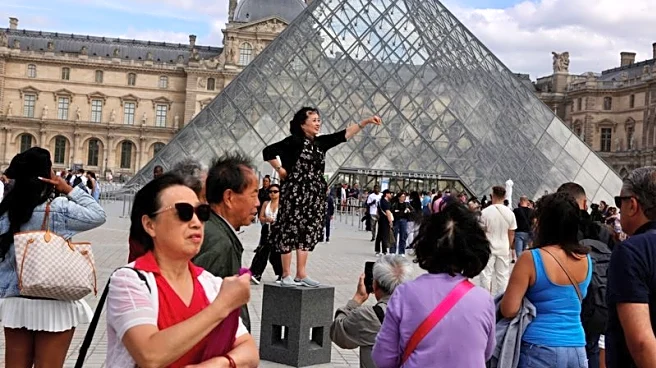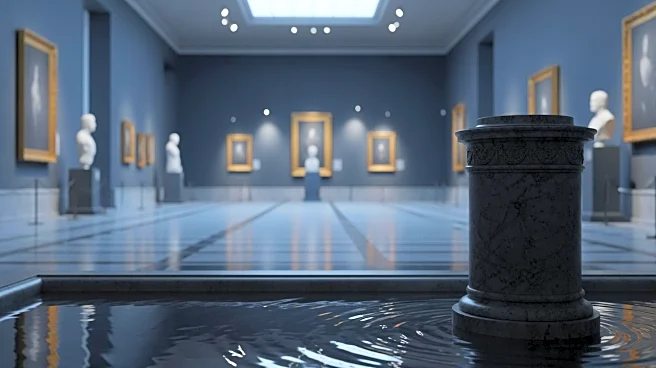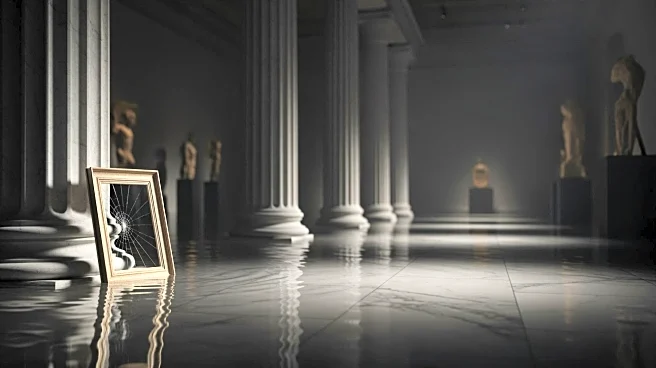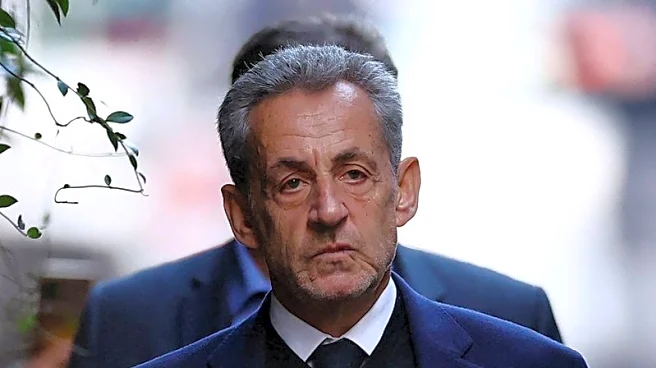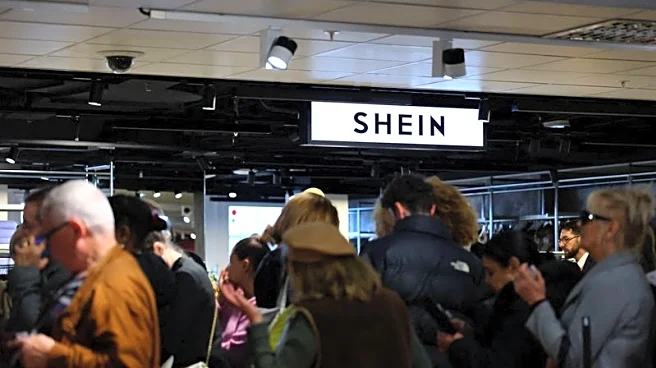What's Happening?
A daring daylight robbery took place at the Louvre Museum in Paris, where thieves made off with priceless jewelry, including a diadem, an emerald necklace, and a pair of emerald earrings. The heist, which occurred on October 20, 2025, involved four suspects
who used a truck-mounted crane to break into the museum and escaped on motorbikes. The stolen items are of significant historical value, having belonged to French royalty such as Queen Marie-Amelie and Empress Marie-Louise. The Louvre has been closed for a second day as authorities conduct a manhunt for the suspects. French President Emmanuel Macron condemned the theft as an attack on French heritage.
Why It's Important?
The theft of such historically significant items from the Louvre, the world's most-visited museum, highlights vulnerabilities in the security of cultural institutions. This incident could lead to increased scrutiny and potential reforms in museum security protocols, not only in France but globally. The stolen artifacts are irreplaceable pieces of French history, and their loss represents a cultural blow. The heist also raises concerns about the effectiveness of current security measures in protecting national treasures, potentially prompting museums worldwide to reassess their security strategies.
What's Next?
A nationwide manhunt is underway to apprehend the suspects, with French authorities intensifying their efforts. The investigation is being overseen by the French Culture Minister and the Justice Ministry, with the involvement of the Banditry Repression Brigade. The Louvre is expected to remain closed until further notice, and visitors with pre-booked tickets are being refunded. The incident may lead to a reevaluation of security measures at the Louvre, including the potential establishment of a police station within the museum premises.
Beyond the Headlines
The heist underscores the challenges of securing historic buildings, which often have architectural constraints that complicate modern security implementations. The incident may spark a broader discussion on balancing the preservation of historical sites with the need for enhanced security. Additionally, the theft could influence international art markets, as stolen artifacts often resurface in illicit trade networks, prompting increased vigilance among art dealers and collectors.





